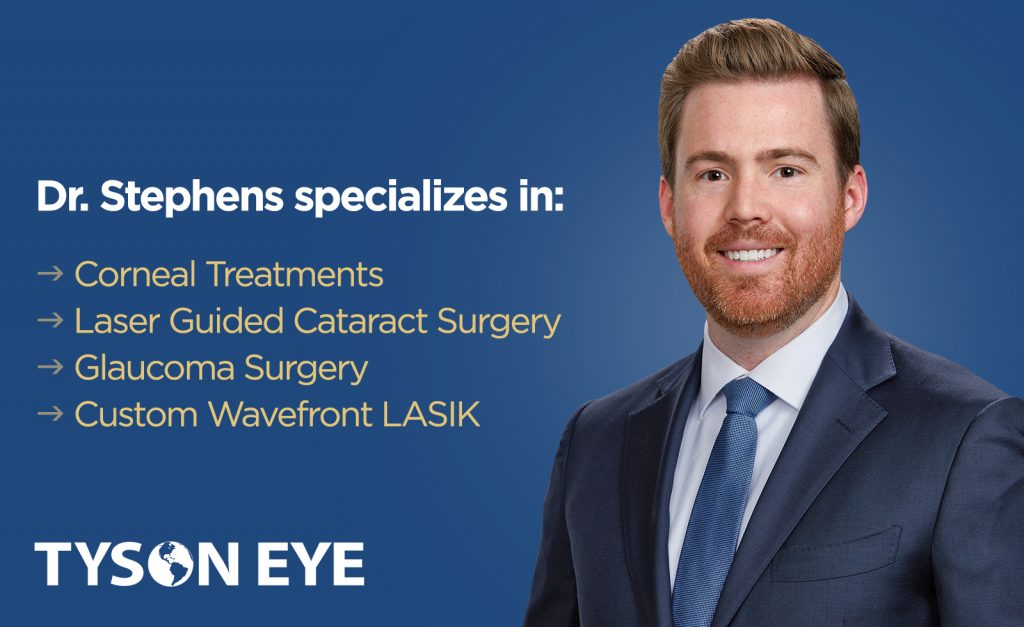What is the Cornea and What Does it Do?
The eye is often described as the biological equivalent of a camera. One important part of this camera is the cornea. The cornea is the transparent front covering of the eye which provides protection to the eye’s delicate internal anatomy. It also allows the eye to focus by refracting light onto the “film” of the eye, the retina. It also filters some of the sun’s UV light and acts as a barrier to bacteria, debris, and other items that may enter the eye. If your cornea is damaged by injury, infection, or disease, it can lead to problems with your vision and discomfort of the eye. It’s important to understand the common issues that can affect the cornea and start treatment early.
Common Corneal Issues
Allergies – For allergy sufferers, warm, dry weather and a high pollen count can cause burning, itchy, and watery eyes. Thankfully, most allergy-related corneal issues may be treated with over-the-counter antihistamine drops. However, occasionally these require medical attention or prescription medication for relief.
Dry Eye – When the eye produces fewer tears or lower quality tears, the cornea doesn’t stay lubricated and dryness may occur. Dry eye symptoms include redness, burning, discharge, blurry vision, and the feeling that you have something in your eye. Over-the-counter treatments like artificial tears and other lubricants can minimize the symptoms of dry eye. Eyelid hygiene with hot compresses and eyelid scrubs may also help with debris buildup from chronic dryness. Your doctor may also prescribe prescription medication for long term treatment of dry eye.
Keratitis – Keratitis is an inflammation in the cornea which usually results from an infection or an injury to the eye. Infections may be caused by bacteria, viruses, fungi, or other organisms. Sleeping in contact lenses or improper contact lens care may lead to serious infections. It is especially important to only use contact lens solution to clean lenses. Never use tap water. Your eye doctor may prescribe antibacterial drops depending on the cause of the infection.
Keratoconus- Keratoconus is a progressive thinning and steepening of the cornea which typically affects young adults. This condition causes increased nearsightedness, astigmatism, and may result in scarring of the cornea. The most important risk factor for keratoconus is eye rubbing. It is important never to rub your eyes! Keratoconus treatment includes glasses, contact lenses, corneal cross linking, and cornea transplants.
Corneal Dystrophies
Corneal dystrophies are the result of material buildup that clouds the cornea or changes its shape. They range in severity and may run in families. Some cause little or no symptoms and go undetected in the early stages. However, some cause pain and serious vision issues. Common corneal dystrophies include Fuchs’ dystrophy, lattice dystrophy, and map-dot-fingerprint dystrophy.
Fuchs’ Dystrophy –Fuchs’ dystrophy is caused by a gradual deterioration of endothelial cells in the cornea. These cells balance fluids in the cornea, preventing swelling. As the cells slowly deteriorate, the cornea swells as fluid builds up. This may cause blurry vision or pain. Fuch’s dystrophy is treated with drops, ointments, or partial thickness corneal transplantation.
Lattice Dystrophy – Lattice dystrophy is caused by an abnormal protein called amyloid accumulating in the cornea. It usually begins at a young age, between 2-7, and can erode the epithelium of the cornea. The condition can be very painful and can cause scarring and vision impairment. Corneal transplants may be effective for lattice dystrophy. However, the condition may recur after cornea transplants leading to decreased vision.
Map-Dot-Fingerprint Dystrophy – Map-dot-fingerprint dystrophy typically occurs in both eyes between the ages of 40 and 70. It leads to abnormal folds in the surface of the cornea, creating shapes that resemble continents on a map or fingerprints. These irregularities can cause painful erosions or blurred vision. If drops or ointments don’t provide relief, there are several surgical options to help smooth out the cornea surface and promote growth of healthy tissue.
Treating Corneal Dystrophies
Corneal Transplant – If topical treatments are not effective in treating your cornea, your doctor may recommend a corneal transplant to replace part of your cornea with corneal tissue from a donor. There are different types of cornea transplants which are tailored to your specific needs. Your doctor will be able to go over the best option for your eye as well as the risks and benefits associated with the procedure.
Laser Surgery – Excimer laser surgery may be an effective treatment for corneal dystrophies or disorders. The laser can remove irregularities on the cornea, improving vision, and healing corneal erosions.
A healthy cornea is important to maintaining your best possible vision. If you have issues with your cornea, we would love to use our knowledge and experience to help you see and feel better. Tyson Eye Center is here to help. Our team of specialists has expanded with the addition of Dr. J. David Stephens, MD. Dr. Stephens brings his experience and specific expertise to diagnose and treat the full spectrum of corneal disorders to Tyson Eye Center. Schedule your consultation today by scheduling an appointment on our website or calling 239.542.2020.
